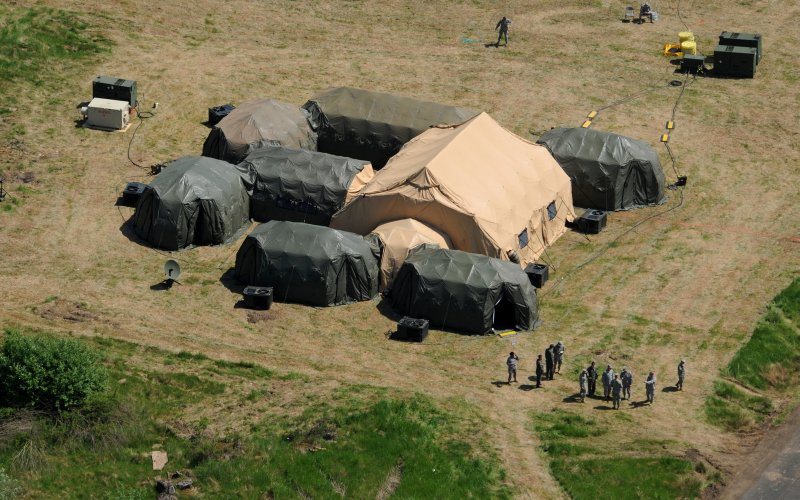U.S. Air Forces in Europe is showcasing a new concept designed to enhance a joint force commander’s combat capability as part of the Combat Air Forces/Mobility Air Forces conference here May 23 and 24.
The concept stemmed from the 2009 Joint Forces Exercise Austere Challenge, when 3rd Air Force was tasked to rapidly deploy the joint force air component commander to a forward location collocated with the joint force commander using the smallest footprint possible.
Airmen from the 435th Air Ground Operations Wing and 603rd Air Operations Center partnered to find a solution: an all-weather deployable system, known as Command and Control Forward, capable of supporting 24-hour operations, 7 days a week, from anywhere in the world.
“Our solution primarily relies on existing Air Force programs of record rather than requiring a complete new investment,” said Col. John Shapland, the 435th AGOW commander. “In today’s constrained fiscal environment, anytime you can build upon an existing capability to meet new requirements, you’re already ahead of the power curve.”
According to Colonel Shapland, the goal of locating the joint force air component commander side by side with the joint force commander is to ensure air, space and cyberspace powers are fully and properly employed across the spectrum of joint operations.
The challenge was providing sufficient communications capabilities to reach back to the 603rd AOC for the majority of planning and operations execution using the smaller footprint.
“Our biggest challenge was designing the right facilities to house the (joint force air component commander’s) operation in any environment,” said 1st Lt. Jeffrey Pierdomenico, the 1st Combat Communications Squadron site lead for the C2-Forward. “Combat (communications) already possessed the right command and control gear, but our only command tent and audio-visual options were too large and not tactical enough to meet the C2-Forward mission. The solution we developed allows us to rapidly deploy in multiple configurations to support operations from two to 150 personnel.”
During an operational readiness exercise in 2010, the 435th AGOW and 603rd AOC deployed the first version of C2-Forward made from existing resources, proving the concept was possible.
This first effort was followed later that year by a weeklong C2-Forward exercise. During this exercise, the 3rd AF commander and his air operations center staff executed an operational scenario from the deployed site, further proving and refining the C2-Forward concept. From these exercises and follow-on tests, the team incorporated lessons learned, which resulted in an adaptable, scalable system capable of deploying within 72 hours of notification.
The C2-Forward now allows the joint force air component commander or joint task force commander a host of options, to include operating from a down-range location without the high costs or lead-times required to deploy a complete air operations center, while retaining the full-range of air operations center capabilities through reliable command and control reach back, said Col. Pete Davey, the 603rd AOC commander.
If adapted by Air Force leaders, the next step is to formalize and standardize C2-Forward across the Air Force.
“We’re already seeing pieces of C2-Forward employed in support of NATO command and control forces controlling Operation Unified Protector,” said Lt. Gen. Frank Gorenc, the 3rd AF commander. “Using C2-Forward concepts, we have built a forward air liaison and intelligence, surveillance and reconnaissance cell ensuring United States air, space and cyber power is maximized in support of (Operation Unified Protector).”










